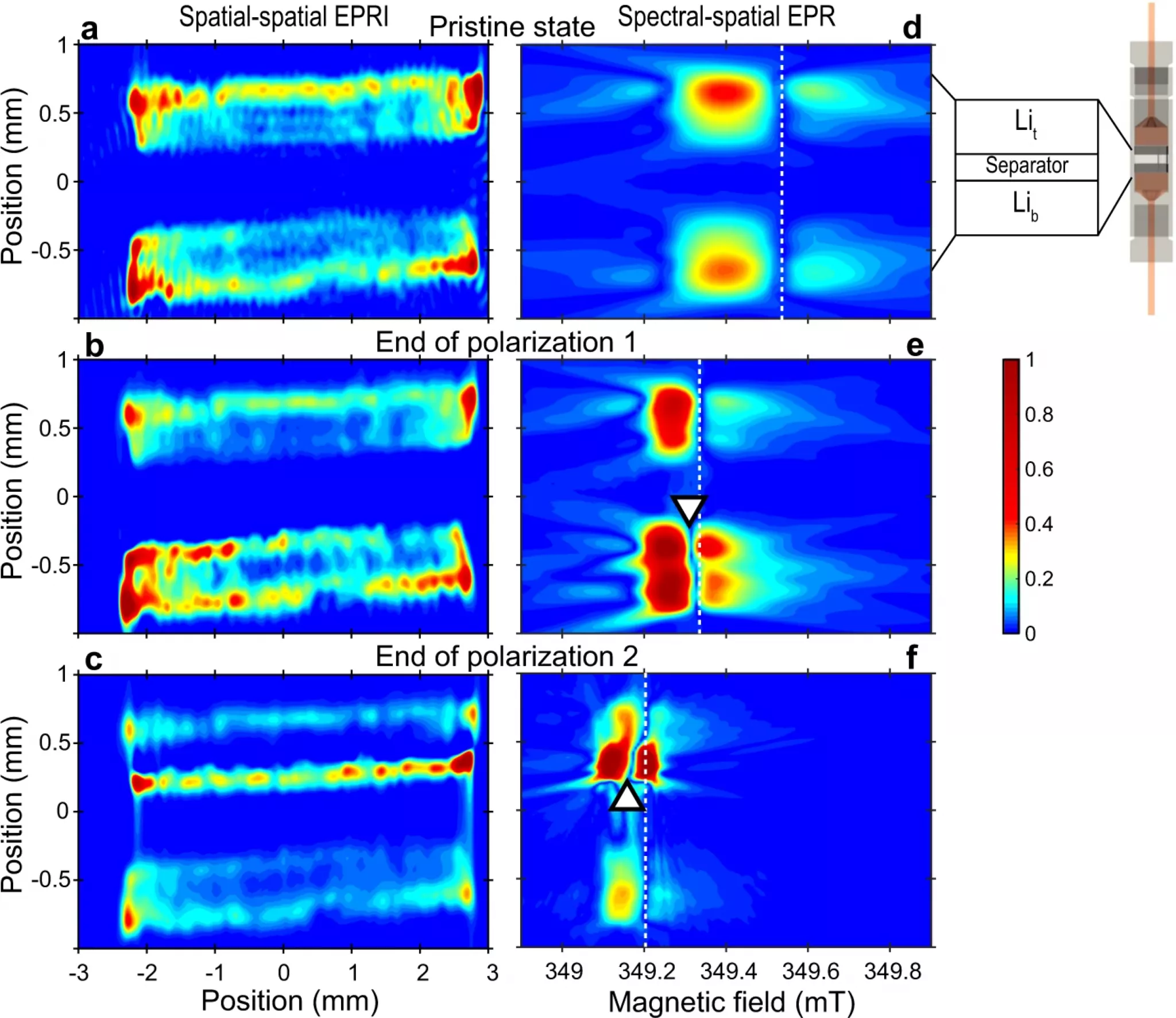Original use of a characterization method to directly follow the growth of dendrites
Li-ion batteries are more and more numerous in our daily life. After portable devices, such as smartphones or laptops, they are now used in electric cars. Researchers are constantly trying to optimize this technology. Today, one of the remaining challenges for the automotive industry is to improve the user experience for new buyers, allowing them to quickly charge their electric vehicles. Manufacturers have a long-term goal of a full charge in 10 minutes.
However, an obstacle to this ambition is the appearance of “dendrites” in the batteries during the fast charges. A dendrite is an outgrowth of metallic lithium that is formed by parasitic reactions at the electrode. When a dendrite leaving the negative electrode, the anode, meets the positive electrode, the cathode, a short circuit occurs. This phenomenon damages the battery and can cause a thermal runaway.
French scientists, coordinated by Dr Elodie Salager, RS2E member, have demonstrated the possibility of using electron paramagnetic resonance (or EPR) to follow in real time the deposits of metallic lithium and therefore the growth of dendrites. Such an approach could make it possible to better control the latter phenomenon. The results of the study, carried out in the framework of the RENARD national infrastructure (FR3443), are presented in the journal Nature Communications

Picture 1 : Combination of RPE imaging and spectroscopy to characterize the spatial position, morphology and evolution of metallic lithium deposits in real time
Electron paramagnetic resonance is a characterization method that allows the detection of unpaired (or single) electrons. Metallic lithium has unpaired conduction electrons which are visible by the aforementioned method. EPR imaging can locate them. Moreover, the features of the signal obtained by EPR spectroscopy (shape, resonance magnetic field, amplitude) provide information about the local environment of the detected electron. There is a correlation between the shape, the magnetic field of signal appearance and the morphology of metallic lithium deposits.
Based on this observation, the researchers propose a methodology combining EPR imaging and spectroscopy, in a Li//Li symmetric cell, to characterize in real time the spatial position, the morphology and the evolution of these metallic lithium deposits.
---
References:
Monitoring metallic sub-micrometric lithium structures in Li-ion batteries by in situ electron paramagnetic resonance correlated spectroscopy and imaging
Charles-Emmanuel Dutoit et al.
Nature Communications, 03/03/21, DOI : 10.1038/s41467-021-21598-2